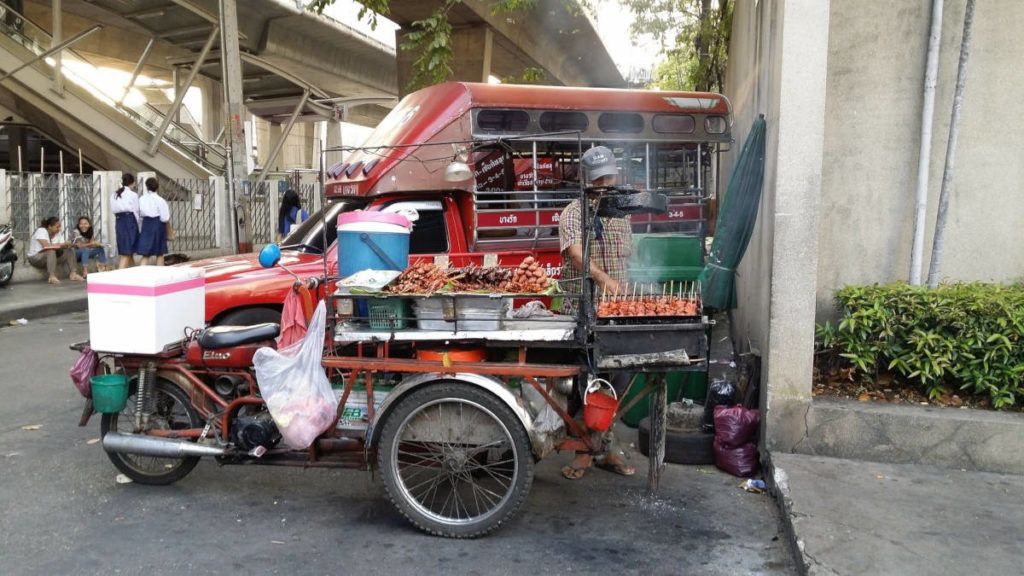Eating and drinking
Often, the food at your holiday destination looks very appealing! However, since we are not used to this kind of food coupled with a different standard of hygiene, we run a greater risk of traveler’s diarrhea. How can you limit the risks of becoming ill during your vacation or world trip? We are happy to provide you with some tips:
Precautions
- Check if the plates, glasses and cutlery are clean. In Asia you get everything neatly sealed in a number of eateries when you take your seat. Then you know for sure that you are getting clean cutlery and plates. Even if you want to eat with chopsticks, you often get new chopsticks that are pre-packaged. Do not use chopsticks that are already in a large pot on the table; there is often still a bit of everything on them.
- Don’t eat uncooked food or peeled fruit. You can buy delicious fruit at street stalls anywhere in the world. If it is peeled for you on the spot, it is not such a problem. If it has been peeled before, you don’t know how long it has been in the sun and whether it has been rinsed off with dirty water. The best thing is to peel the fruit yourself after having thoroughly washed your hands.
- Always drink mineral water and make sure when you buy it that the closure is still new (in many countries the bottles are reused and then simply filled with tap water). Even if you order a bottle of water in a restaurant, make sure that the cap is still sealed. Never drink water from the tap! Do not use public water taps.
- Don’t use ice cubes unless you are sure they are made from clean mineral water (fortunately this is the case in more and more tourist areas of the world).
- Don’t eat scoop ice-cream. Packed ice-cream from the factory is safe.
- Make sure that food is freshly cooked and when serving is still piping hot. Then any bacteria will have been killed.
- In many hostels, especially in South America, there is a kitchen where you can prepare your own food. If you do, buy your (pre-packaged) meat and vegetables in a supermarket where they are well chilled. Don’t buy it at a street stall on the corner, where the meat has been “slow cooking” for hours in the sun.
- Look carefully into which restaurants you are going to eat in. If you are looking for restaurants that are geared to western tourists, you can generally assume that they take more account of hygienic conditions.

Eateries on the street
Does this mean that you can never have a good meal at one of the many street stalls you see, especially in Asia? We have done it regularly during our four-month trip and we never got sick. We did pay attention to a few things to reduce the risks. We looked at how and where the food was stored, whether it was prepared hot and whether it was busy. If nobody was there, we wouldn’t dare go there; it’s also not as nice an atmosphere either. When it was super busy, we knew we were getting fairly fresh stuff on our plate. Finally, we checked if we had clean cutlery and plates. Luckily, it always went well.
If, despite all the precautions, you still have to deal with traveller’s diarrhoea, it is annoying but it does not do any harm in itself. The body does its job to remove the bacteria as quickly as possible. Make sure that you consume enough fluid. For example, use ORS, a saline solution that prevents any moisture shortage. You can take diuretics, but preferably only if you have to travel for a day and frequent toilet visits are impossible. Otherwise, let nature do its work, it will pass within a few days!
